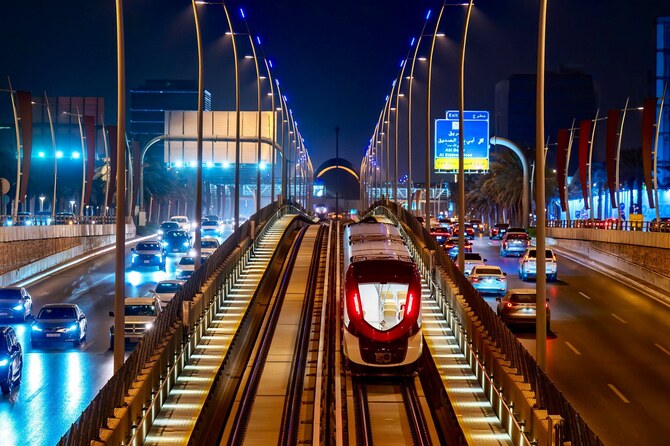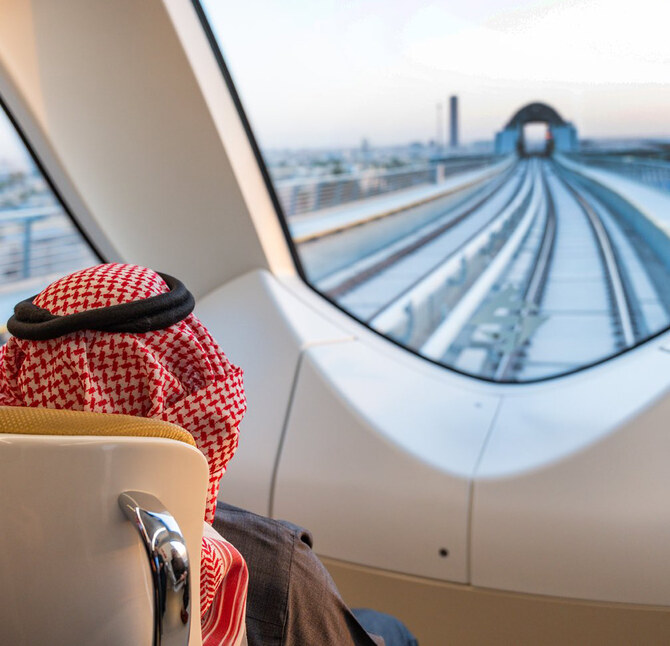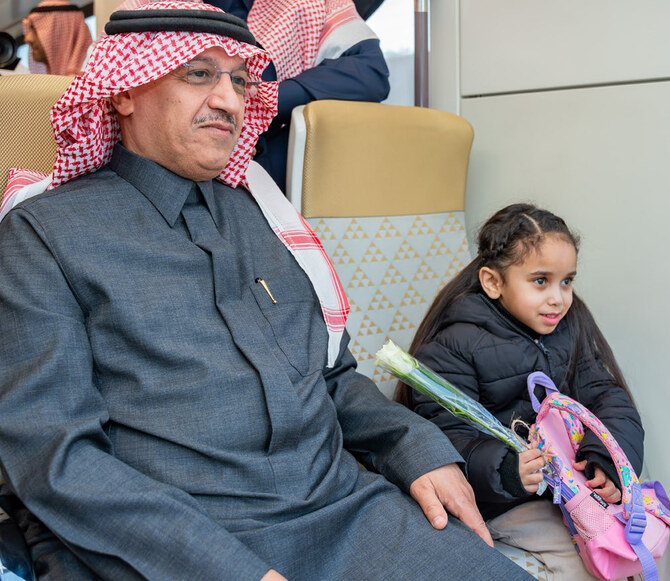RIYADH: The Royal Commission for Riyadh City announced the roll-out of two additional lines —Red: King Abdullah Road and Green: King Abdulaziz Road — of the Riyadh Metro on Sunday.
Passengers have access to stations on the two lines from 6 a.m. to midnight, the Saudi Press Agency reported.
Riyadh Metro, a key pillar of Saudi Vision 2030, is a crucial step toward reducing traffic congestion in the capital and improving the quality of life for the city’s residents.
With this addition, five out of the six metro lines are now operational.
The Red Line is 25.1 km long and runs from east to west along King Abdullah Road, connecting King Fahd Sports City to King Saud University across 15 stations, including the Riyadh International Convention and Exhibition Center.
It intersects with the Blue Line at the STC Station, with the Green Line at the Ministry of Education Station, and with the Purple Line at Al-Hamra Station.
The Green Line, along King Abdulaziz Road, is 13.3 km long and runs from King Abdullah Road, past the Ministry of Education, all the way to the National Museum.
Its 12 stations serve several government entities, including the Ministry of Defense, the Ministry of Finance, and the Ministry of Commerce, as well as numerous commercial, service, and residential facilities.
All stations on the line were open to the public on Sunday, except for the Ministry of Finance and National Museum stations, which will become operational at a later date.
The Green Line intersects with the Red Line at the Ministry of Education Station and with the Blue Line at the National Museum Station.
According to the previously announced roll-out plan, the Orange Line, which covers Madinah Road, will open on Jan. 5, 2025, completing the Riyadh Metro network and making it fully operational.
Passengers can identify destinations and purchase tickets using the Darb mobile application or at Riyadh Metro stations.
The first phase of the Riyadh Metro began on Dec. 1 with three lines: the Blue Line, connecting Olaya Street to Al Batʼha; the Yellow Line, running along King Khalid International Airport Road; and the Purple Line, covering Abdul Rahman bin Awf Road and Al-Shaikh Hassan Bin Hussain Street.
The total length of Riyadh Metro’s six lines spans 176 km and includes 85 stations.
































